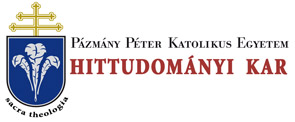Folia Theologica et Canonica 10. 32/24 (2021)
Sacra theologia
50 SZABOLCS ANZELM SZUROMI, O.PRAEM. of the primary written and archaeological material.4 This is sufficiently demonstrated at international level not only by the English translation of Francois Petit’s fundamental work (published in 1947)5, which was edited in 20116, and by the summary and sourcebook of the spiritual history of Theodore James Antry and Carol Neel in 20077, but also by the comprehensive and new perspective of Rudolf Michael Schmitz’s analysis, primarily from the point of view of the structural characteristics of communities, which was defended as a doctoral dissertation at the University of Lateran in 2016.8 We can also see the serious research work that aims to correct the data of Norbert Backmund’s monumental work (1949-1956)9 in the light of the more recent results. An outstanding role in the clarification of the canonical framework of the religious way of life10 11, as part of the day-to-day institutional activity of the Catholic Church, was played by the renewal of canonical life from the 11th century with its spirituality, refinement of its organization and way of life, which was of course closely linked to the Gregorian Reform.11 Among the chapters, a canonical distinction was formed early on between the cathedral and the associate, the secular and the regulated (religious); between the canonical colleges with a definite and an indefinite number of members; between the exempt and the non-exempt colleges; and between colleges which were entitled to wear insignia and those which were not.12 For the classification of the chapters and the precise description of their workings, the decisions of the Council of Rome of 1059 (later included in the Decretum Gratiani) are particularly significant.13 41 would like to express my special thanks here to Ilona Valter. Cf. Szakács, B. Zs., Tiirjei premontrei prépostsági templom, in Kőszeghy, P. - Tamás, Zs. (ed.), Magyar Művelődéstörténeti Lexikon, XII: Középkor és újkor, Budapest 2011. 171. 5 Petit, R, La spiritualité des Prémontrés auxXIP etXIIP siécles, Paris 1947. 6 Petit, R, Spirituality of the Premonstratensians. The Twelfth and Thirteenth Centuries (transl. Szczurek, Victor) [Premonstratensian Texts and Studies 2], Collegeville, Minnesota 2011. 7 Antry, Th. J. - Neel, C., Norbert and Early Norbertine Spirituality, Mahwah, New Jersey 2007. 8 Schmitz, R. M., Ad instar canonicorum. La struttura essenziale della vita canonicale secolare (Corona Lateranensis 72), Cittä del Vaticano 2016. 9 Backmund, N., Monasticon Premonstratense: id est historia atque canoniarum candidi et canonici ordinis Premonstratensis, I-III. Straubing 1949-1956. 10 E.g., Cotel, P. - Jombart, É., Les principes de la vie religieuse, Louvain 1933.6 11 Cf. Gilchrist, J„ Gregory VII and the Juristic Sources of his Ideology, in Studia Gratiana 12 (1967) 3-37. 12 Szuromi, Sz. A., Az egyházi intézményrendszer története (Szent István Kézikönyvek 15), Budapest 2017. 117-120. 13 Cone. Romanum (1059) c. 3=D. 32 c. 5 (Friedberg, Aemilius [ed.], Corpus iuris canonici, I. Lipsiae 1879 (repr. Graz 1955) [hereafter: Friedberg I.] 117); c. 5=C. 16 q. 2 c. 3 (Friedberg I. 786); cc. 6-7=C. 16 q. 7 c. 20 (Friedberg I. 806); cc. 11-12=C. 35 q. 2 c. 17 (Friedberg I. 1268); cc. 15-16=C. 24 q. 3 c. 25 (Friedberg I. 997).
